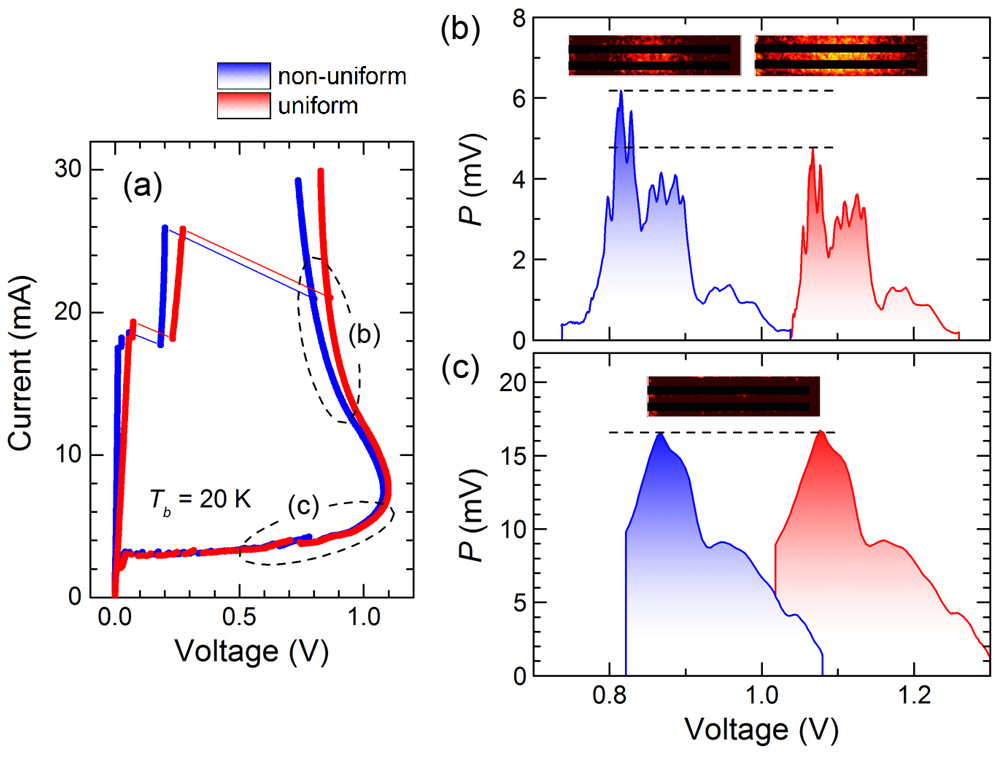
From left, Assoc Prof Kakeya and JSPS Research Fellow Tsujimoto
Terahertz-frequency light has recently attracted interest across many fields, including biology and medical diagnostics, security and nondestructive inspection. Synchronized stacks of superconducting Josephson junctions provide a high-intensity potential source of terahertz radiation; however, designing powerful sources requires a strategy to overcome local overheating that destroys the superconducting property. The authors here find that hot spots can be minimized in these devices, thus substantially increasing the intensity of resulting coherent terahertz waves.

Figure: (a) Current-voltage characteristics of superconducting terahertz sources. Detected emission intensity P as a function of voltage V in the high- and low-bias regimes is shown in (b) and (c), respectively. The insets beside the data present the corresponding temperature distributions in the terahertz sources.
Paper information
[DOI] http://dx.doi.org/10.1103/PhysRevApplied.2.044016
M. Tsujimoto, H. Kambara, Y. Maeda, Y. Yoshioka, Y. Nakagawa, and I. Kakeya
"Dynamic Control of Temperature Distributions in Stacks of Intrinsic Josephson Junctions in Bi2Sr2CaCu2O8+δ for Intense Terahertz Radiation"
Physical Review Applied 2(4) 044016 published 29 October 2014





